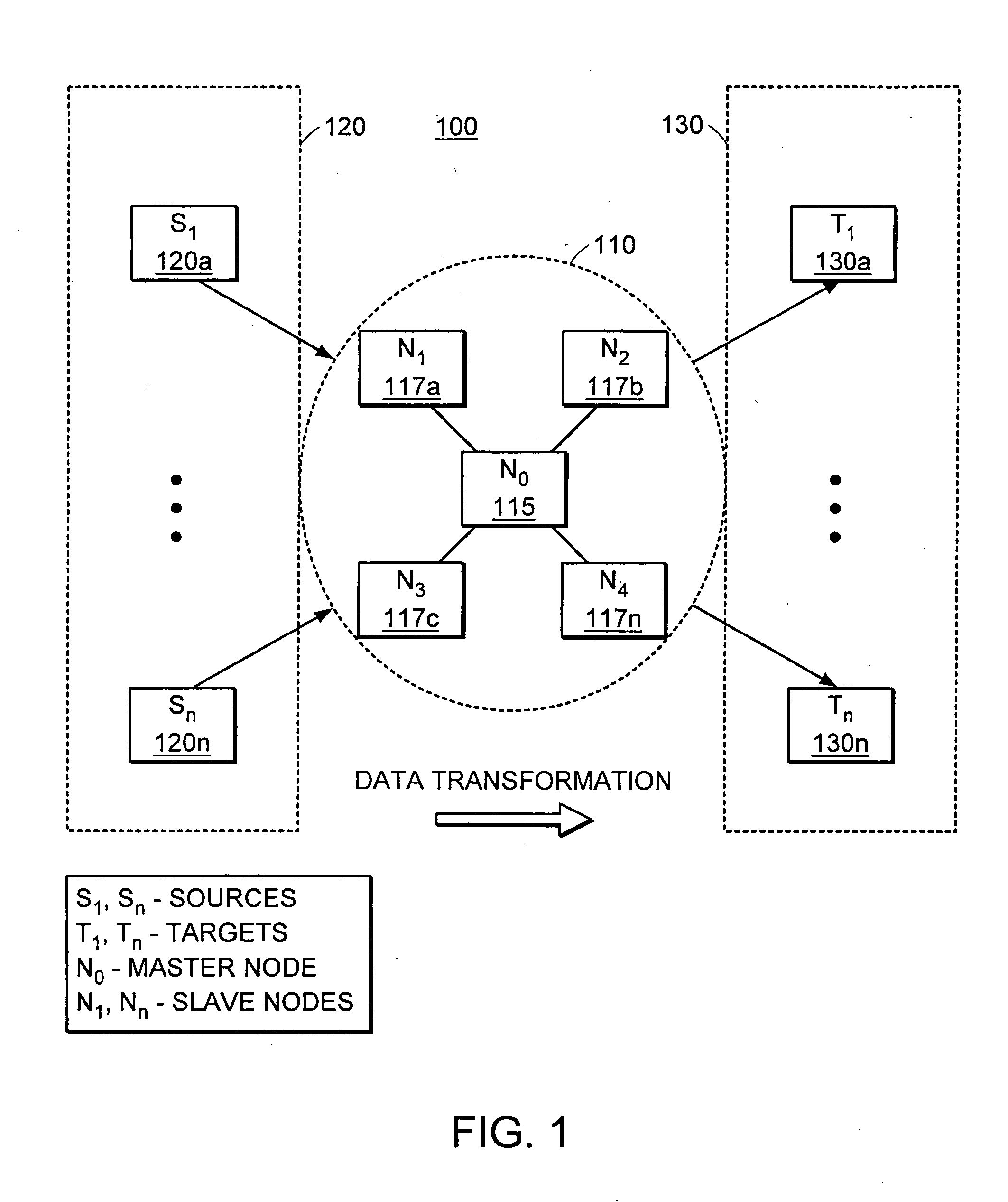Method and system for managing data using parallel processing in a clustered network
a clustered network and data management technology, applied in the direction of program control, multi-programming arrangements, instruments, etc., can solve the problems of large enterprises that continue to struggle with transforming operational data, change load patterns, and change volume and complexity, so as to achieve rapid installation and use
- Summary
- Abstract
- Description
- Claims
- Application Information
AI Technical Summary
Benefits of technology
Problems solved by technology
Method used
Image
Examples
Embodiment Construction
[0026] A description of particular embodiments of the invention follows.
[0027]FIG. 1 illustrates a representative network architecture 100 that includes the cluster 110 of processing computers 115, 117a . . . n of the present invention. The cluster 110 operates as a intermediary between a data source 120 and a data target warehouse 130. The various data sources 120a . . . n may be heterogeneous sources such as relational databases, spreadsheets, text files, XML files, mainframes, web servers, and metadata-rich abstract sources such as Customer Relationship Management (CRM), Enterprise Resource Planning (ERP), and Business Intelligence (BI) systems. The data target warehouse may comprise a single 130 or a plurality 130a . . . n of data storage devices or media. The data targets may also be heterogeneous targets such as relational databases, spreadsheets, text files, XML files, mainframes, web servers, CRM systems, ERP systems, and BI systems. The processing cluster 110 can comprise ...
PUM
 Login to View More
Login to View More Abstract
Description
Claims
Application Information
 Login to View More
Login to View More - R&D
- Intellectual Property
- Life Sciences
- Materials
- Tech Scout
- Unparalleled Data Quality
- Higher Quality Content
- 60% Fewer Hallucinations
Browse by: Latest US Patents, China's latest patents, Technical Efficacy Thesaurus, Application Domain, Technology Topic, Popular Technical Reports.
© 2025 PatSnap. All rights reserved.Legal|Privacy policy|Modern Slavery Act Transparency Statement|Sitemap|About US| Contact US: help@patsnap.com



